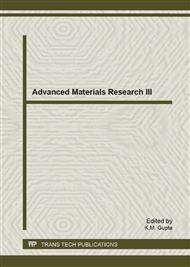p.68
p.76
p.81
p.86
p.92
p.97
p.102
p.107
p.112
Surface of Cast Iron after Laser Hardening
Abstract:
Laser surface hardening of cast iron is not trivial due to the material’s heterogeneity and coarse-grained microstructure, particularly in massive castings. Despite that, hardening of heavy moulds for automotive industry is in high demand. The present paper summarises the findings collected over several years of study of materials structure and surface properties. Phase transformations in the vicinity of graphite are described using examples from production of body parts in automotive industry. The description relates to formation of martensite and carbide-based phases, which leads to hardness values above 65 HRC and to excellent abrasion resistance.
Info:
Periodical:
Pages:
92-96
Citation:
Online since:
April 2013
Authors:
Price:
Сopyright:
© 2013 Trans Tech Publications Ltd. All Rights Reserved
Share:
Citation:


